Know the problem: The Macro Proyect
This is a macro-project to amplify the Guggenheim Museum in Bilbao in two places, right in the heart of Urdaibai:
En Gernika and Murueta.
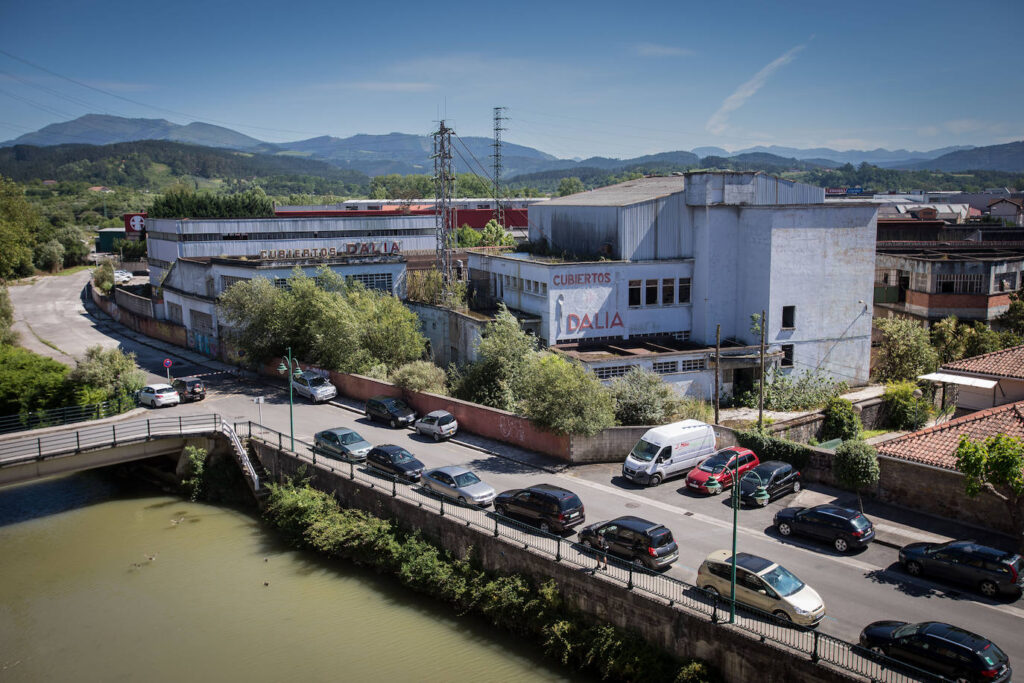
Although there is only one PROJECT, the Provincial Council of Bizkaia presents it in parts.
The reason for doing that is that if the complete project were presented, the environmental impact it would entail would make it unsustainable, unacceptable and unjustifiable.
According to what has been published in the newspapers, this macro-project would bring 144,000 visitors a year to Busturialdea in the months between June and September. Considering that 45,000 people live in the area, plus those who come there every summer, this would be a huge number for the region in those months.
The people behind this barbarity insist that the Guggenheim Urdaibai only makes sense from an environmental sustainability perspective, but what is clear is that mass tourism and environmental sustainability are not compatible. That is why this project does not make sense.

This macro-project threatens the whole of the Urdaibai Biosphere Reserve
The Urdaibai Biosphere Reserve is the only Biosphere Reserve we have in the Basque Country. It was declared a Reserve by UNESCO in 1984, and currently there are several laws and conventions in force that grant protection measures to our Biosphere Reserve:
– LAW 5/1989, of 6 July, on Protection and Planning of the Urdaibai Biosphere Reserve.
– Natura 2000 Network (Special Area of Conversation and 3 Special Protection Areas)
– Ramsar Convention (International Convention since 1993)
In the world, there are only TWO Biosphere Reserves that have their own law and one of them is ours.
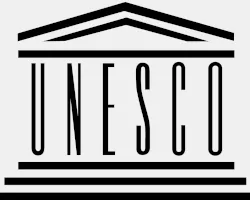
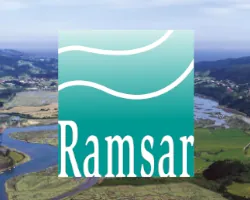
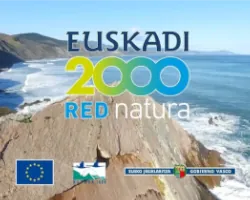
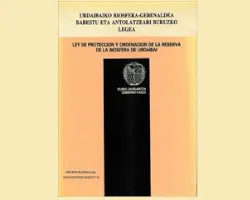
What do we know about the project?
All the information we have about this project is what has been published in the media. Thus, we have obtained the latest news from the report published by El Correo on December 17, 2023. It is a dossier prepared by the New York architecture studio Cooper Robertson. (El Correo has access to the study that defines in detail the characteristics of the new museum).
Este era el plan con el Guggenheim de Urdaibai (EL CORREO)
El Correo is a patron (member) of the Guggenheim Foundation and thus obtains information that is repeatedly denied to the public. So, together with the patrons EITB (Basque TV and Radio) and Deia (Newspaper close to the Basque Nationalist Party, PNV), it has an important informative role in the job of making things look good and disseminating the supposed benefits of this project to the four winds. Until now we have received filtered information about the project and always, showing it in a favourable light and hiding what does not suit them.
The project is in three main parts: Dalia, Astillero de Murueta and the “green walkway ” that links these two locations. Let’s analyze them one by one:
1. DALIA
This will be the gateway to the macro-project. This first location of the art gallery will occupy 5,000 of the 10,000 m². It is planned as a two-storey building in which there will be no exhibition spaces. It will offer a ticket sales point and audio guides. It will have an auditorium, a shop and a restaurant-cafeteria with a terrace. The building will also have a bicycle rental area and a car park for a hundred vehicles will be built next to it.
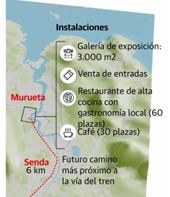

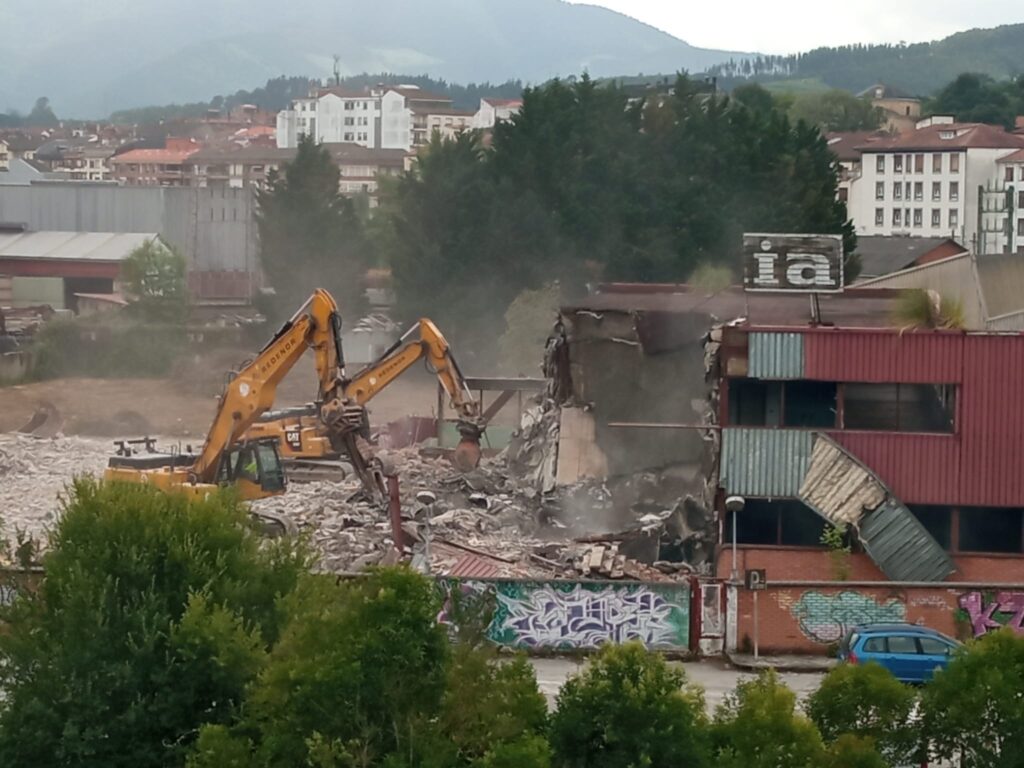
A bit of history
Dalia is a former cutlery company located in Gernika. It was built in 1957 by the Bilbao architect Luis María de Gana. It was later extended twice, in 1966 and 1973. In the 1970s it was the largest cutlery manufacturer in Europe and hundreds of Gernika residents worked there. From 1977 onwards the sector entered into crisis and ten years later the factory closed. In 2007, the Provincial Council of Bizkaia acquired the land and today we can say that it belongs to all the people of Bizkaia.
The manufacturing process was carried out in this first Dalia building, where the raw materials and the steel plating, stamping and polishing rooms were located. The use of steel contaminated the area where the factory is located and the Dalia building is currently a contaminated plot of land of 21,186 m².
The land is located on top of the Gernika aquifer, which is also contaminated.
Acuífero de Gernika y ubicación en zona de máximo riesgo de inundabilidad. (elDiario.es)
A report sent by the URA agency (Waterboard) to the Basque Government in 2022, mentions that the chosen site in Gernika is in a “high risk area” of flooding and that this risk must be taken into account.
As mentioned in point I of the agreement signed by the DFB (Provincial Council of Bizkaia) with MITECO (Spanish Ministry of Ecological Transition and Demographic Challenge) : “The flooding risk will be corrected”…
At this point there is also an aquifer in a “worrying” situation due to the contamination and that could be further affected by the works necessary to carry out the Guggenheim Urdaibai project.
Finally, it must be remembered that the region has recurring problems with water supply, especially during the dry season. It therefore goes without saying that a project that is expected to attract 144,000 visitors a year can only make the problem worse .
The demolition of Dalia
Surprisingly, it was in May when we learned of the news of the demolition of the old Gernika cutlery factory at an electoral event led by the then candidate Elixabete Etxanobe. At the Gernika rally, she promised to begin “the necessary demolition work” to begin the Guggenheim Urdaibai project at the end of the summer.
Applications for the tender are closed and, pending adjudication and in view of the specifications, a total “clean-up” has been chosen. The project to demolish the buildings and constructions existing in the old Dalia icebox is the property of Bizkaia Azpiegiturak S.A, owned by the Provincial Council, and is signed by the architects Jon Ajuria and Pablo Maguregui.
The cleaning of contaminating materials, the cleaning of the land and the removal of the existing waterproofing asphalt layer on the roof and wooden elements, the demolition of floors, partitions and blocks, as well as the demolition of industrial facilities have been decided.
The base tender is for 1,057,896.99 euros, with a completion period of 20 weeks. After the preliminary phase, the choice would be made between the fourteen companies. The offers range between 339,000 euros and 741,000 euros. Subsequently, the decontamination of the site would be carried out.
But the Dalia building… Is it really a ruin or is it of interest as industrial heritage? The original part (1957) is industrial heritage and could form part of any future museum project. But of course, to do so it must be done with tact, a knowledge of the industrial history of Gernika, and in this case, the team of architects who have been given the job of doing that do not have it… This work has been awarded to an architectural studio in New York and this aspect of historical memory is of little interest to them and will undoubtedly not be valued. Deciding to start from scratch contrasts with what has been done in other exhibition sites and artistic spaces around the world. By demolishing this industrial heritage, part of our history would be erased forever.
That is why it is very difficult to understand the unexpected announcement by the Provincial Council of Bizkaia and the absolute silence of the Guggenheim Museum surrounding the destruction of the industrial heritage of Gernika and the historical memory of industrialization and the experiences of many inhabitants of Gernika and nearby towns.
The Guggenheim Museum still has time to go back on this new cultural initiative on the ruins of what was a brilliant example of 20th century architecture .
Interesting articles about Dalia
DALIA no es una «ruina industrial», es patrimonio, es una obra significativa del arquitecto Luis María de Gana y Hoyos. Es culturalmente reutilizable (Asociación Vasca de Patrimonio Industrial y obra pública)
El derribo de Dalia Gernika. Un proyecto fuera de lugar y tiempo (Asociación Vasca de Patrimonio Industrial y obra pública)
Dalia-Gernika. ¿De cucharera a almacén del Guggenheim? (Asociación Vasca de Patrimonio Industrial y obra pública)
Guggenheim Gernika Museoa: mal comienzo (ArquiLecturA)
Dalia, otro plato indigesto más del Guggenheim Urdaibai (Naiz)
Gernikako Dalia fabrika zaharra eraisteko lanekin hasi direla salatu du Guggenheim Urdaibai Stopek (Hitza)
2. MURUETA SHIPYARD
The second Guggenheim site in Urdaibai will be the 41,000 m² plot of land occupied by the Murueta shipyard at the mouth of the Gernika estuary. This will house the exhibition area, ticket office and bicycle parking. There will also be a cafeteria and a restaurant.
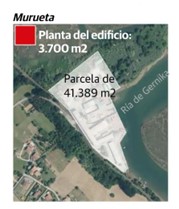

A bit of history
El Astillero de Murueta se sitúa en la zona más vulnerable de la Reserva de la Biosfera. Ubicación obtenida en 1943 gracias a una concesión del Gobierno Español.
The Murueta Shipyard is located in the most fragile area of the Biosphere Reserve. The right to build there was obtained in 1943 thanks to a concession from the Spanish Government.
The duration of the concession was 75 years and ended in 2018. The shipyard has been occupying a protected area without permission since then. The conditions of the concession are very specific:
Duration: 75 years.
Activity: shipbuilding.
Once it has expired: leave the occupied land, clean up the pollution generated on it and return the area to the administration in the same condition as when it was occupied.
Current status: Shipyard in operation.
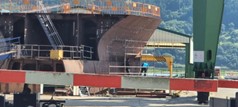
Dredging and extensions
In these 80 years, the shipyard has increased its size without permission. From an initially occupied surface of barely one hectare to the current occupation of almost 5 hectares.
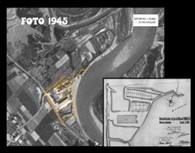
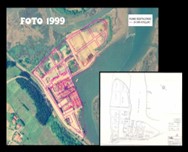

Since the activity is the construction of ships, once they are built they have to be taken out to sea. To do this, the shipyard has had to carry out several dredging operations (on more than one occasion without authorization) in order to do this:
- 1st Dredging, in the 1970s: Main channel. Sediments accumulated in the area and 22 hectares dried up.
- 2nd Dredging, in the 1980s: 3.4 hectares of tidal flow dried up. Sediments deposited in the surrounding area.
- 3rd Dredging, at the end of the 1990s: 7 hectares dried up. Sediments deposited in the surrounding area.
- 4th Dredging (last) 2003: 243,000 m³ of sediments extracted and deposited in Laida. Consequently: the dredging actions affected the bar at the mouth of the estuary and also significantly damaged the birdlife in the area. It changed the bed of the estuary. Thus, during this period the shipyard has destroyed almost 4% of the wetland in the Biosphere Reserve, which is an area corresponding to approximately 50 football fields.
Por lo tanto, en este periodo el Astillero ha destruido casi el 4% de la marisma de la Reserva de la Biosfera, lo cual es una zona correspondiente aproximadamente a 50 campos de fútbol.
Pollution
In the area where the Murueta shipyard is located, a 42,384 m² plot of land is contaminated. This contamination would be a direct consequence of its activity and, among other components, we can find asbestos.
In action II of the 13 actions mentioned in the agreement signed between the DFB and the MITECO (Ministry of Ecological Transition), reference is made to the cleaning of this contamination and the demolition of the building. All of this with public money. This action II is a misappropriation of public money.
Ownership of the occupied lands
Astilleros de Murueta S.A has been trying for years to claim ownership of the lands it occupies under concession. Thus, it has made different attempts in the courts.
In 2008, it filed a complaint against the Spanish Department of the Environment before the National Court.
In 2012, disagreeing with the previous ruling, it made a second attempt before the Supreme Court.
The ruling it received in both cases was unfavorable. See rulings:
3. GREEN PATHWAY
Road of about 6 km that would go from Gernika to Murueta. This path would link the museum located in Dalia with the one located in the Shipyard.
We can divide this path into two parts:
- From Gernika to the point called Punta Murueta
- From Punta Murueta to the Murueta Shipyard.
As for the first part, it is a path that today is used for walking. It is about 4 m wide and runs from end to end parallel to the Oka River. Cars are prohibited from passing on this road unless authorized. In different areas of the route we can find large cracks produced by the constant erosion produced by river and estuarine dynamics. It is a busy path, widely used by the residents of the region: walkers, bicycles and runners. Adding to all these people another 35,000 each summer month would be outrageous.
For the second part, they propose a stilt house. A walkway built in height. They say that it is an arrangement that will be made on the path that exists today, when there is only a path half a meter wide. This passage was created through the riverbank (muna) and in some cases it can be covered by the tide. The walkway project is absurd, to the point of causing disagreements between the Basque Government and BFA. Thus, this project proposed by the Basque Government was reduced thanks to the allegations received from different associations and the Provincial Council itself. Part of the project has had to be abandoned: the section between Tejería and Astillero.
El Gobierno vasco y la Diputación chocan por un paseo junto al Guggenheim Urdaibai (EL CORREO)


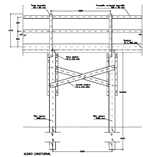
Walkway Features:
- It would have a height of 3 meters.
- A width of 2.20 meters.
- It will cover a distance of 1 km
- Pedestrians, bicycles and electric transportation.
Device that is intended to be located in the most vulnerable area of the Biosphere Reserve, where anthropogenic actions should be fully controlled.
This stilt house is only part of the Guggenheim Urdaibai project, which has already been approved in the Plenary Session of the Board of Trustees of the Biosphere Reserve masked within the project called “Project of environmental restoration and enhancement of the natural and cultural heritage of the upper estuary of the Oka estuary.
In the Official State Gazette of August 8, 2024, the announcement of the Coastal Demarcation of the Basque Country was published regarding the concession of occupation of maritime-terrestrial public domain assets from Punta Murueta to La Tejera. These lands would be occupied by the stilt promenade that is part of the Guggenheim Urdaibai project.
In response to this publication, the Guggenheim Urdaibai Stop platform presented two appeals (09-09-2024):
- Resort to the stilt project. The approval of this project has never been made public.
- Appeal to the occupation of public land for the construction of the stilt house.
Likewise, we informed the contracting body (GV) of the need to suspend the tender for the construction of the stilt house. (09-11-2024)
To our satisfaction, MITECO revoked the occupancy concession of the DPMT lands to give a hearing to the former owners of those lands, who became holders of an occupancy concession. Furthermore, these owners have a preferential right to occupy these lands.
The Basque Government is not assured of the availability of the land on which it intends to establish the stilt house and, therefore, has abandoned the public contracting procedure for the stilt path.
The procedure has not been paralyzed, but is terminated without being awarded to anyone. If they wanted to resume contracting, they would have to start this procedure from the beginning.
The platform has welcomed this decision and has communicated that it will continue to act diligently in future processes that are opened.
How is it going to be financed?
This private museum project is going to be financed with public money.
On June 18, 2023, it was made public that the New York architecture studio Cooper Roberston valued the investment necessary to launch the project at €130 million. As is known, there is a real possibility that this figure will end up becoming 20% more expensive.
- The DFB will contribute €40 million. On November 10, 2022, it was published that Unai Rementeria “shielded” 40 million to be used in the construction of the Guggenheim in Urdaibai “when it is done.” The item was reserved knowing that it would not be used in 2023 and another 10 million were allocated for the study of the contamination of the soils where the museums will be located.
- Another €40 million comes from the Ministry of Ecological Transition of the Government of Spain. This is a subsidy obtained under an agreement signed by the ministry led by Teresa Ribera and the DFB to promote unique sustainable development actions in the area of the Urdaibai estuary. This agreement includes 13 specific actions.
- Thus, €50M would be missing. It is assumed that this money will be provided by the Basque Government, but always after the elections. In November 2023 it was learned that the Basque Government would postpone joining this project after the elections in order to avoid territorial tensions that could have a negative effect on the votes.It is assumed that this money will be provided by the Basque Government, but always after the elections. In November 2023 it was learned that the Basque Government would postpone joining this project after the elections in order to avoid territorial tensions that could have a negative effect on the votes.
At the moment, there is only talk of public money to promote this project; a private project. Let us not forget that the Guggenheim is nothing more than a brand, a franchise established in New York.
You can help!

SPREAD THE CAUSE
Buy our material: badges, banners, stickers and t-shirts. All money obtained is to cover court costs.
BUY!
MAKE A DONATION
Contribute your little drop! Drop by drop we will build a giant wave to stop this madness! We need your help, no matter how small.
DONATE!
JOIN GUS
Participate in the actions we organize: events, talks, demonstrations, tours, etc. Together we add up!
PARTICIPATE!